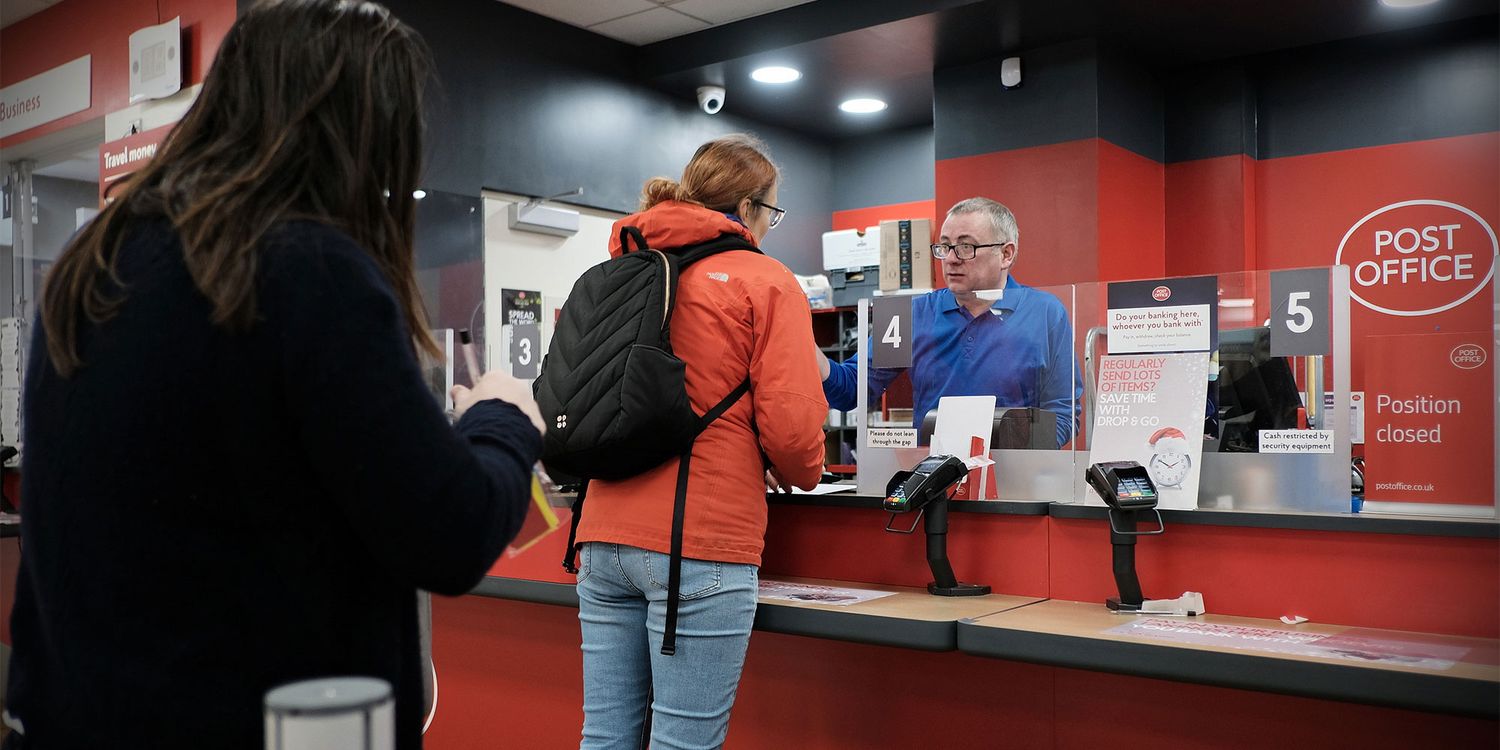In the week that the 150th banking hub has opened its doors, major banks have signed a new £1.75bn contract to continue offering basic banking services at Post Office counters until at least 2030.
The deal will bring in an extra £500m over five years for the Post Office, but with high street branches continuing to close, what does this mean for your access to in-person banking?
Here, we look at what the new deal involves, how post office services compare to traditional branches, and the role banking hubs are playing in plugging the gap.
How does the Post Office deal work?
Under something called ‘The Banking Framework’, first set up in 2017, personal and business customers of 30 banks and building societies can access everyday banking services at local Post Office branches. This includes customers of Barclays, HSBC, Lloyds Banking Group, Nationwide, NatWest Group and Santander.
The current deal, due to expire at the end of this year, collectively costs banks £250m a year, but they will reportedly pay upwards of £350m a year under a new arrangement in place until 2030.
The Post Office – which relies on a government subsidy and has come under scrutiny for its treatment of subpostmasters following the Horizon IT scandal – has said it will increase the remuneration postmasters receive for handling cash transactions and invest in the automation of in-branch cash services.
Post Office chief executive officer Neil Brocklehurst, said: ‘This new, five-year agreement with banks and building societies ensures our branches remain vital hubs for cash access and provides certainty for businesses and individuals nationwide when it comes to their everyday banking.’
- Find out more: is your local bank closing?
Which banking services are available at post offices?
The specifics of what you can do at a post office depends on your bank or building society, but broadly, you can check your balance, deposit cash or cheques and make withdrawals.
The list of what you can’t do is much longer. You won’t be able to:
- transfer money between accounts
- open or close accounts
- register power of attorney or grant of probate
- lodge complaints against your bank
- ask for advice to avoid fraud and scams
- make general enquiries about current accounts, savings, credit cards, mortgages, and personal loans or investments.
Some banks are also scaling back the services available through the Post office. For example, Lloyds Banking Group (which includes Lloyds, Halifax and Bank of Scotland) recently told customers they won’t be able to use personalised paying-in slips at post offices from 2 June, while cheques will not be accepted after 31 December 2025.
- Find out more: best bank and bank accounts 2025
Is your local Post Office suitable for banking?
With 6,303 bank branches closing since January 2015, and 99.7% of the population living within three miles of a Post Office, the network plays a vital role in providing access to cash, banking and bill payment services in areas left behind by high street banks
But, Post Offices are not direct substitutes for bank branches. As well as only being able to access very basic banking services, previous Which? research has voiced concerns from the public around long queues, limited opening hours, a lack of staff expertise in financial services and a lack of private spaces.
There were 11,805 Post Office branches at the end of March 2024 – the highest since 2012 – but only around 3,000 open seven days a week, and just 1,400 offer free-to-use ATMs (you can find your nearest one at postoffice.co.uk/atm-locator). Many post offices are hosted in newsagents and small convenience stores.
The network is made up of:
- Standard agency branches (78%) – the majority of branches, run by franchise partners or subpostmasters
- Outreach services (16%) – part-time operations in rural areas, often based in vans, village halls or local pubs, where permanent branches have closed
- Drop & collect branches (5%) – typically located in inner-city areas and focused on prepaid parcels and bill payments; they don’t provide banking services, although cash bill payments are accepted
- Crown branches (1%) – directly managed by Post Office Limited
What about banking hubs?
Under a different initiative, the Post Office has also been tasked to run banking hubs. These are owned by Cash Access UK (a not-for-profit funded by nine major banks) and offer a much wider range of banking services and support than post offices.
Customers of almost any bank can visit a banking hub to withdraw or deposit cash and pay certain utility and household bills at the counter (run by the Post Office staff).
But, there are also private spaces with community bankers from nine major high street banks available on rotation (typically staffed by the banks with the most customers in the local area) who can assist customers with more complex issues such as debt advice, registering power of attorney, bereavement services and fraud support on specific days of the week.
For example, at the new banking hub in Kirkham, Lancashire, which marks the 150th to be opened across the UK, the schedule is: Lloyds on Monday, NatWest on Tuesday, HSBC and Barclays sharing Wednesday, Santander on Thursday and Halifax on Friday.
It’s likely that banking hubs will play an increasingly important role in the next few years, but it can take a long time between bank branches shutting down and a new hub opening, leaving some communities without access to in-person banking for months or even years.
The government has pledged to have 350 banking hubs by 2029. With older, poorer and vulnerable customers disproportionately affected by bank branch closures, Which? wants the government to ensure these are delivered, and revise that figure upwards if necessary.

